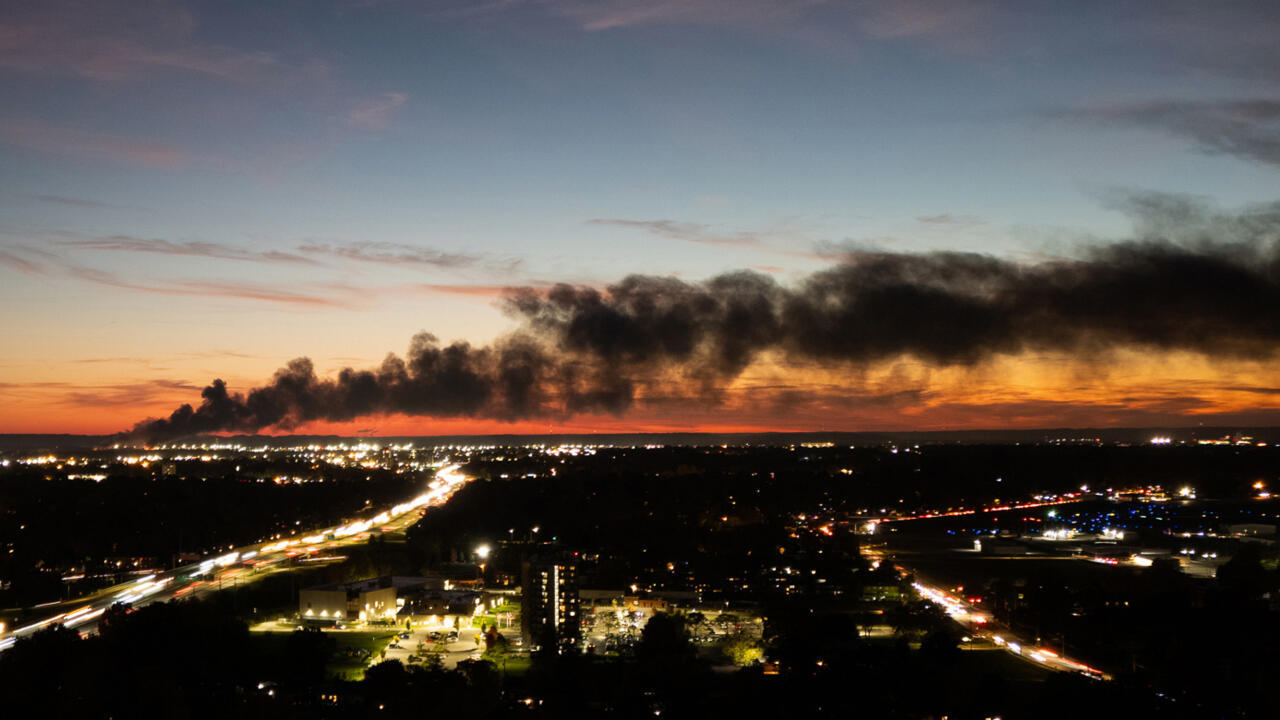Washington (AFP) – The death toll from a cargo plane crash in the southern US state of Kentucky rose to 12 on Wednesday, with investigators saying the accident was caused by one of the engines catching fire and detaching during takeoff.
The McDonnell Douglas MD-11, operated by package delivery giant UPS and bound for Hawaii, crashed at 5:15 pm (2215 GMT) Tuesday, shortly after departing from Louisville Muhammad Ali International Airport.
It exploded into flames as it plowed into businesses adjacent to the airport, killing multiple people on the ground. A three-person crew was aboard.
“I’m deeply saddened to share that the death toll has risen to 12, with several individuals still unaccounted for,” Louisville Mayor Craig Greenberg said on X.
Kentucky Governor Andy Beshear called the tragedy “heartbreaking” and “unimaginable.”
The National Transportation Safety Board sent teams to Louisville to investigate the accident. NTSB member Todd Inman told reporters that investigators had reviewed closed-circuit airport footage “which shows the left engine detaching from the wing during the take-off roll.”
While the plane crashed and destroyed or damaged multiple buildings, leaving a fiery debris field nearly half a mile (800 meters) long, its left engine remained “on the airfield,” Inman said.
He added that the flight data recorder and the cockpit voice recorder, known as a plane’s black boxes, have been identified and will be sent to Washington for analysis.
Tuesday’s crash reportedly was the deadliest in the global package delivery giant’s history. Its main hub, Worldport, is in Louisville, where it employs thousands of people.
UPS has halted package sorting operations at its facility.
Video shared by WLKY showed the left engine ablaze as the aircraft tried to lift off.
By early Wednesday, Greenberg said on X that aviation officials had reopened a runway.
Airport spokesman Jonathan Bevin said the cargo flight “went down three miles (five kilometers) south of the airfield” after taking off.
The plane, filled with some 38,000 gallons of fuel for the long-haul flight to Hawaii, narrowly missed a major Ford vehicle assembly plant that employs some 3,000 people, adjacent to the UPS Worldport facility.
“It could have been significantly worse,” Beshear said of the tragedy.
Aerial footage of the crash site showed a long trail of debris as firefighters blasted water on the flames, with smoke billowing from the area.
Beshear said the aircraft hit a petroleum recycling facility “pretty directly.”
According to NTSB, the plane was built in 1991 and was modified into a cargo aircraft. McDonnell Douglas merged with Boeing in 1996.
Boeing, the US aviation giant which has experienced multiple fatal crashes and safety incidents in the past decade, said in a statement that “we stand ready to support our customer and have offered technical assistance to the NTSB.”
UPS travels to more than 200 countries via nearly 2,000 daily flights, with a fleet of 516 aircraft. It owns 294 of those planes and hires the rest.
The crash comes amid the longest government shutdown in US history with Transportation Secretary Sean Duffy warning of “mass chaos” due to a lack of air traffic control staff.
NTSB member Inman said the agency was not aware of any staff shortages at Louisville’s airport at the time of the crash, although a full investigation into all aspects of the crash including air traffic control staffing has been launched.
In January, an American Eagle airliner hit a military helicopter outside Washington’s Ronald Reagan National airport, killing all 67 people on both aircraft.
That crash, which ended the country’s 16-year streak of no fatal commercial air crashes, has added to concerns about the US air traffic control system, which some regard as an understaffed operation beset by aging equipment problems.



This incident is reminding me of AA191 from the seventies. It was a DC10, a bit older and not exactly like an MD11, but close enough. A shortcut in the procedure of mounting the engine after a maintenance check damaged the engine mount. The engine separated and damaged the flight controls and hydraulics, and the slats retracted on one side only. This caused an asymmetrical wing stall, unrecoverable bank angle, and an unsurvivable impact on the ground
There was also El Al 1862 in the nineties. That one was material fatigue in one of the 747 engine fuse pins, leading to the separation of right inboard engine and the subsequent impact and loss of the right outboard engine next to it. This compromised the hydraulic system, and once again the slats retract, the wing stalls, and the plane goes down. Because of this incident they’ve identified and resolved that defect and methodology, but i do wonder about counterfeit parts. To the best of my knowledge the NTSB has been struggling with shady parts suppliers selling second hand and counterfeit parts as OEM. It’s mostly limited to smaller carriers and independent operators, but I doubt any supply chain is 100% secure.
Whatever words are spent on this one, at the end of the day it’s gonna be mostly speculation until the NTSB report comes out in the next 1-3 years. Somehow (so far anyway) the NTSB has escaped regulator capture in this oligarchy, so the report should be pretty accurate